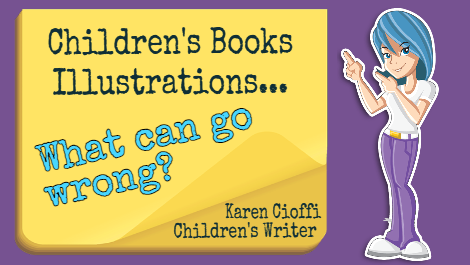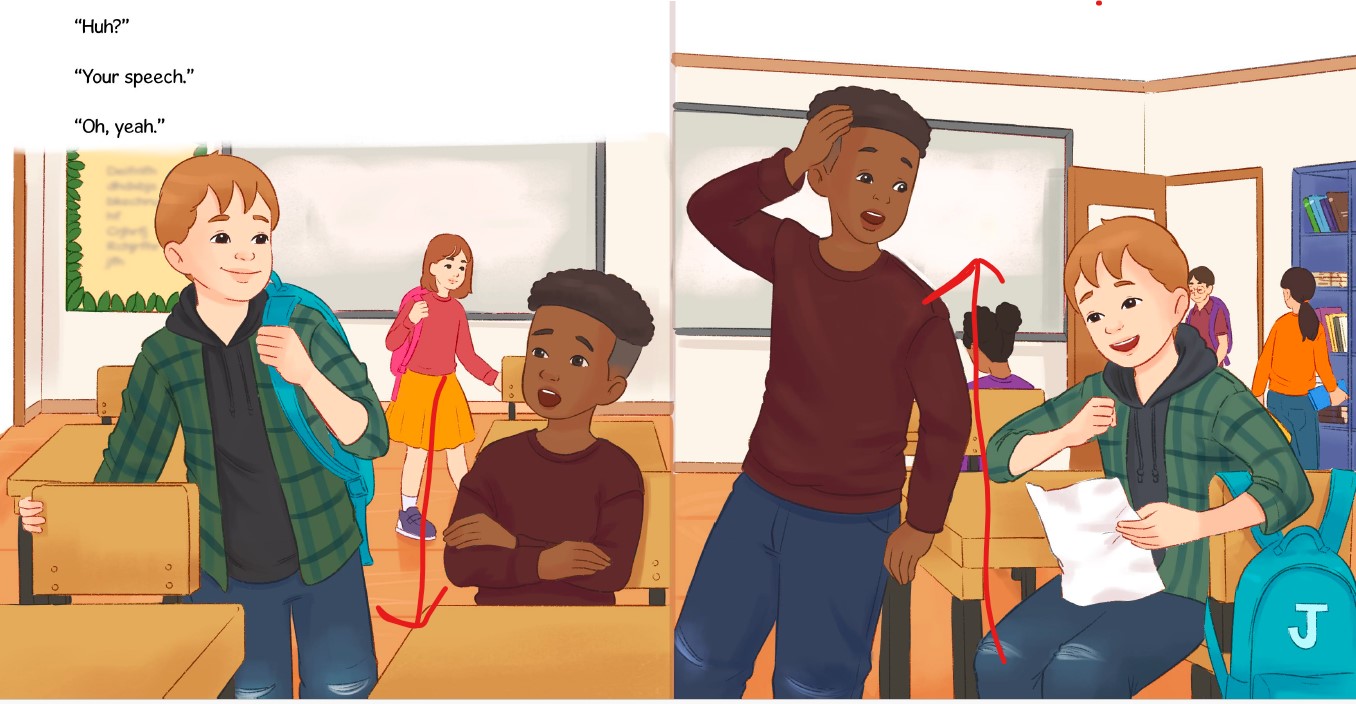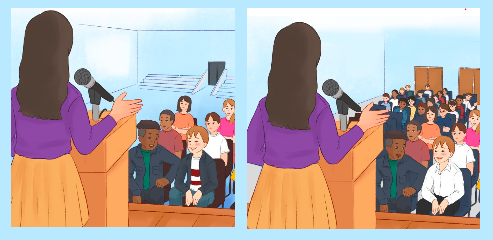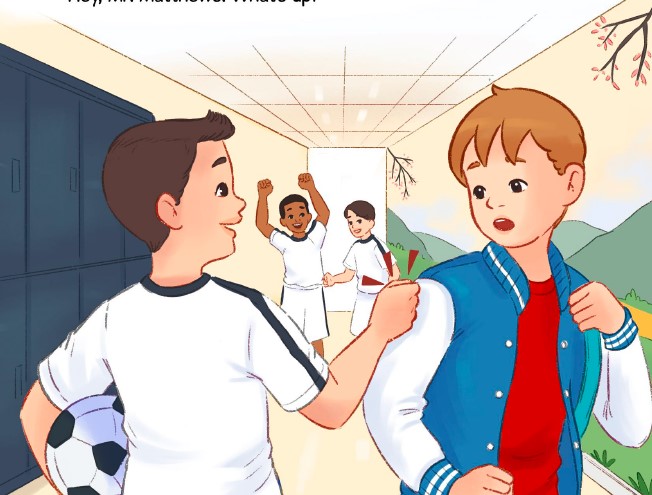In my recent monthly newsletter, I discussed what can go wrong with children’s book illustrations and decided to delve deeper into the problems that can arise when working with unprofessional illustrators.
Here’s how I started it in the newsletter:
Word of advice: if you’re looking for your own children’s book illustrator, don’t assume the illustrations they show in their portfolio, on their websites, or social media are the quality you’ll get. This poor quality is especially true when dealing with illustrators from less developed countries.
Having to give half down before seeing what you’ll be getting can be a huge problem. Check the sketches carefully for things like disproportionate bodies, inaccurate scene details, inconsistencies, and so on.
Now, I’m not going to mention any names, but I do want to alert you to what can happen.
POOR QUALITY AND DETAILS.
I’m working with an illustrator (Illustrator 1) who corrects one thing, and then when the PDF comes back, there is something else wrong—something as significant as a teal backpack turned red.
The same illustrator:
-Had the 12-year-old protagonist look like an 8-year-old. (This is a common problem with unprofessional illustrators.)
-Had weird shadows and streaks on the characters.
-Had bookcases in different colors in the same room, in different scenes.
-Had a scene where all the desks were facing forward, but the chalkboard was in the back. There was an adjacent scene in that classroom where the seats faced the chalkboard.
-Had no students in a school auditorium when class president speeches were going on and students were required to be there. Also had the auditorium design off.
-Had missing molding in scenes that should have had it.
-Changed floors from scene to scene.
-Ended a hallway scene with a blank white space.
I could go on and on with this illustrator, but you get the idea.
The final PDF version count is around twenty!
Illustrator 2 (a good illustrator, but):
-He has a habit of using odd colors and leaving walls and skies blank. What’s annoying is that these are single-page illustrations with NO text, so he doesn’t need to leave room for it. He also spelled a word wrong within his illustration, which ended up being a huge headache.
Illustrator 3
I currently have three publishing projects, and Illustrator 3 (this is the first time I’m working with her) is also from an underdeveloped country. We just started, and I’m already having problems.
-Heads disproportionate to bodies.
-Depth off.
-Character looks like a five-year-old; he should look ten.
-Not able to follow instructions.
-Blank shoes.
And she’s only done two sketches so far, which still need to be corrected!
I’ve seen so many more errors over the years; it would take pages to list them all.
I’ve concluded that some illustrators don’t want to put the needed effort into their work. They do as little work for the price as possible, or they’re careless and don’t check their work.
That’s why, as the author or publisher, you need to put those illustrations under a microscope before publishing.
COLORING
Even if your sketches are amazing, they can look much different once colored.
I love Illustrator 2’s sketches, but the odd coloring and lack of details are very noticeable once the sketches are colored. It drastically changes the look.
Why leave blank walls or a blank blue sky. It’s the details in an illustration that makes it fun and interesting.
TIME FRAME
Along with poor quality, there is the time factor to consider. Like the quality, the time frame seems to be a location problem.
I’ve worked with Illustrator 1 and stopped working with her because of all the delays. She had so many excuses for delaying the project.
I’m working with her again because a ghostwriting client for whom I did a second book used her and asked me to manage the illustrations because of all the problems and time delays this illustrator creates.
I started on the project at the beginning of June, but it has been ongoing since March. It’s finally at the finish line.
Illustrator 3 told me the illustrations would take about a month. I sent her the initial payment in mid-July, and this is the first week of August. And she still needs to complete the first two sketches.
SUMMING IT UP
You can see how much is involved in getting illustrations done, how much care needs to go into examining them carefully, and how important it is for the illustrator to get it right no matter how many revisions they need to make.
So far, I would venture to say you get what you pay for. The less the illustrator charges, the less the quality and adherence to the timeline.
Your book is a reflection of you. It should be the best it can be.
Unfortunately, though, most authors can’t afford to spend $150 to $400+ per illustration. Even at the $150 mark (#2), you need to be careful.
I’m always looking for quality illustrators who are reasonably priced; if you know of one, please leave a comment or send me an email.
Finally, if you’d like help self-publishing your children’s book, please check out Writers on the Move Press.

I’m a working children’s ghostwriter, rewriter, editor, and coach. I can help turn your story into a book you’ll be proud to be the author of, one that’s publishable and marketable.
OTHER HELP I OFFER:
HOW TO WRITE A CHILDREN’S FICTION BOOK
A DIY book to help you write your own children’s book.
PICTURE BOOK AND CHAPTER BOOK COACHING
Four to ten-week coaching programs.
WRITERS ON THE MOVE PRESS.
Self-publishing help for children’s authors.
CREATING AN AUTHOR ONLINE PLATFORM
Step-by-step with a former WOW! Women on Writing author online platform instructor
You can contact me at: kcioffiventrice@gmail.com. Or give me a call at 347—834—6700. (Please leave a message- I’ll get back to you as soon as I can.)
MORE ON WRITING FOR CHILDREN
Five Types of Children’s Story Endings with Examples
Writing Dyslexia-Friendly Children’s Fiction
Writing Mistakes – Find and Destroy






1 thought on “So, What Can Go Wrong With Children’s Books Illustrations?”